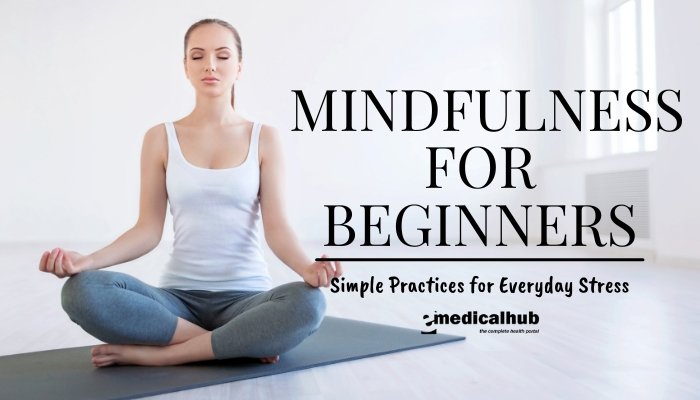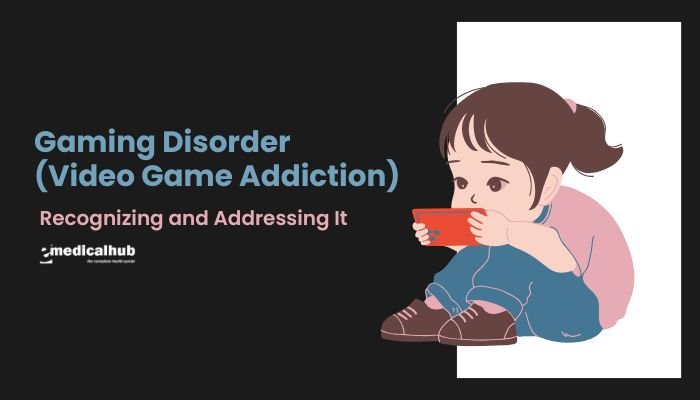Introduction
In a world where distractions multiply by the day—phones buzzing, hectic schedules, constant demands on our attention—mindfulness emerges as a gentle yet powerful antidote. Essentially, mindfulness is the practice of being fully present in the current moment, noticing our thoughts, emotions, and bodily sensations without judgment.
While it might sound simple, cultivating a mindful state can fundamentally shift how we navigate stress and enrich our daily lives.
Whether you’re juggling family responsibilities, tackling deadlines, or simply feeling overwhelmed by routine pressures, mindfulness offers an accessible way to pause, reconnect with yourself, and respond to challenges with greater clarity.
In this article, we’ll explore the essence of mindfulness, its benefits, and practical “starter” techniques you can integrate into daily tasks—like eating, walking, or even washing dishes. By devoting just a few minutes a day, you may discover that mental calm and emotional resilience are more attainable than you thought.
Disclaimer: The information provided here is for educational purposes and is not a substitute for medical or psychological advice. If you experience severe or persistent stress, anxiety, or other mental health concerns, consult a qualified health professional.
Understanding Mindfulness
What Is Mindfulness?
At its core, mindfulness means paying attention to the present moment deliberately and without judgment. It’s a practice rooted in various traditions, especially Buddhist meditation, but has been widely adapted into secular settings—like workplaces, schools, and healthcare—to reduce stress and increase well-being.
Key elements:
- Awareness: Observing what’s happening right now—your breath, body sensations, immediate surroundings, or ongoing thoughts.
- Non-Judgment: Recognizing thoughts or feelings without labeling them as “good” or “bad,” simply acknowledging them as they arise.
- Returning to the Present: When the mind wanders (as it naturally does), gently guiding attention back to the present focus—like your breath or a chosen anchor.
Why Mindfulness Matters for Stress
- Reduces Rumination: Stress often escalates when we replay regrets (past) or catastrophize about the future. Mindfulness helps ground us in the “now.”
- Promotes Emotional Regulation: By noticing emotions early, we can respond more skillfully instead of reacting impulsively.
- Enhances Clarity and Focus: Frequent “mental wandering” can hamper productivity. Mindful awareness can improve concentration.
- Fosters Self-Compassion: A kinder inner dialogue emerges when we observe ourselves gently instead of harsh self-criticism.
Research Support
Dozens of studies link mindfulness-based interventions (like Mindfulness-Based Stress Reduction, or MBSR) to reduced stress, anxiety, and even chronic pain. Neuroscientific findings suggest that consistent mindfulness practice can alter brain regions tied to emotional regulation, attention, and even sense of well-being.
Laying the Foundation for a Mindfulness Practice
Beginner’s Mindset
Approaching mindfulness as a beginner fosters openness and lack of preconceptions:
- No Need for Perfection: If your thoughts drift, that’s normal. Gently redirect your focus.
- Patience: Like any skill—learning a musical instrument or new language—mindfulness grows with practice.
- Curiosity: Encourage interest in each moment, letting go of judgments or outcome-based expectations.
Finding a Comfortable Posture
You can practice mindfulness while seated, standing, or lying down. Basic recommendations:
- Sit or Stand Upright: Let your spine be straight but relaxed, shoulders back, chest open.
- Stable Base: If seated, place feet on the floor, hands resting on your lap or thighs. If lying, keep arms by your sides, perhaps slightly out.
- Minimize Distractions: A quieter spot—though not necessarily silent—helps initially.
Setting Realistic Goals
Starting small is key:
- Short Sessions: 3–5 minutes daily can be more sustainable at first than jumping into 30-minute sessions.
- Incremental Increase: Over time, you might extend to 10 or 15 minutes or integrate multiple shorter practices throughout the day.
- Regularity Over Duration: Consistency fosters deeper benefits. Practicing daily for 5 minutes often surpasses sporadic 30-minute sessions.
Basic Mindfulness Practices for Everyday Stress
Mindful Breathing
Breath awareness is often the foundation of mindfulness. It anchors attention and serves as a gentle focal point.
Steps:
- Find a Comfortable Position: Sit or stand with a relaxed posture.
- Focus on Inhale-Exhale: Observe the sensation of the breath entering (cool air at nostrils, chest or belly expansion) and leaving (warm air, contraction).
- Notice Wandering: When your mind drifts to to-do lists or random thoughts, gently return to the next breath.
- Optional Counting: For extra focus, count each inhale-exhale cycle up to 10, then start over.
Duration: Start with 1–3 minutes, adding time as you become more comfortable. This can be done anywhere—like at your desk before a meeting or in bed before sleep.
Body Scan Meditation
This technique systematically directs awareness through different body regions, often used to release tension and cultivate somatic awareness.
Steps:
- Get Settled: Lie down or sit comfortably.
- Gradual Focus: Begin at the feet, noticing sensations (tingling, warmth, tightness) in your toes and soles.
- Progress Upwards: Shift attention slowly to calves, knees, thighs, pelvis, lower back, up the torso, arms, shoulders, neck, face, until top of head.
- Allow and Accept: Whatever you observe—aches, itches, or calmness—let it be without forcing changes.
- Return if Distracted: If you lose track, calmly resume from where you left off or from the last body part you remember scanning.
Outcome: Body scanning fosters relaxation, helps identify stress accumulation in specific muscles, and encourages letting go of tension.
Mindful Walking
Harness daily movements (like walking to the office or around the block) as a mindfulness opportunity.
Steps:
- Slow Down: Walk at a deliberate, unhurried pace.
- Focus on Sensations: Notice how your foot contacts the ground, the shifting of weight, your breath’s rhythm, and subtle muscle actions in your legs.
- Tune into Surroundings: Observe environmental cues—sounds, sights—without fixating or analyzing them.
- Prevent “Autopilot”: If your mind begins rehashing tasks or worries, gently return to noticing each step.
Benefit: Great for active individuals or those who prefer movement over sitting meditations.
Mindful Eating
Converting a meal or snack into a mindful event helps reduce stress and fosters a deeper appreciation of nourishment.
Steps:
- Eliminate Distractions: Turn off screens, set aside your phone.
- Engage Senses: Observe the appearance, texture, scent of your food before taking a bite.Eat Slowly: Chew thoroughly, noticing flavors and textures. Pause between bites, breathing or reflecting.
- Gratitude: A moment to acknowledge the effort behind the food, from farm to table, can heighten appreciation.
Benefit: Helps curb emotional or mindless eating, enhancing relationship with food and bodily cues.
Brief Pauses During the Day
Mindfulness can be integrated in micro-breaks:
- Email Pause: Before replying to an email, take a single mindful breath, noticing your posture and tension.
- Phone or Computer Notifications: Use them as “mindfulness bells.” Each beep reminds you to quickly check in with your body or thoughts.
- Transition Moments: Between tasks or meetings, take 30 seconds to center yourself.
Purpose: These small disruptions to autopilot can lower stress accumulation and keep you grounded.
Tips for Sustaining a Mindfulness Practice
Start Small, Be Patient
Expecting immediate, dramatic changes might lead to frustration. Mindfulness improvements—like calmer responses or better emotional regulation—may surface gradually over weeks.
Consistency Over Perfection
- Daily or near-daily short sessions (5–10 minutes) can yield more results than sporadic lengthy sessions.
- If you skip a day, that’s okay—resume the next. Avoid guilt or self-criticism.
Use Apps or Guided Recordings
Mobile apps (e.g., Headspace, Calm, Insight Timer) provide guided meditations, keep track of streaks, and offer variety if you need new prompts. This can maintain motivation.
Join a Local or Online Mindfulness Group
- Community Support: Practicing with others can reinforce commitment and allow shared experiences.
- Classes or Workshops: Learning from a certified teacher fosters better technique, especially for deeper concerns like anxiety or chronic stress.
Coping with Challenges During Practice
Racing Thoughts
It’s normal for the mind to drift or get lost in ruminations. The essence of mindfulness is acknowledging that drift and gently returning to your focal point (breath, body, or present moment), repeating as necessary without frustration.
Emotional Discomfort
Mindful awareness can reveal underlying anxieties or sadness. If this is overwhelming:
- Shorten Session: Start with 2-3 minutes, build tolerance.
- Seek Professional Guidance: If strong emotions surface, therapy or counseling can help process them.
Boredom or Restlessness
Meditation can appear “boring,” but noticing that sensation is part of the practice. Over time, you learn to observe the mind’s craving for constant stimulation and gently release it.
The Science Behind Mindfulness Benefits
Stress Response Regulation
Chronic stress triggers cortisol and other stress hormones. Studies indicate mindfulness can reduce cortisol production over time and modulate the amygdala (the brain’s alarm system) reactivity.
Improved Emotional Regulation
Regular meditation enhances activity in the prefrontal cortex, associated with executive function and controlling emotional impulses. This fosters calmer, more deliberate reactions to stressors.
Enhanced Focus and Cognitive Flexibility
MRI scans show mindfulness practice can strengthen neural connections in networks controlling attention, potentially improving concentration on daily tasks.
Sleep Quality
By calming mental restlessness, mindfulness can help insomnia sufferers reduce nighttime rumination, leading to improved sleep onset and possibly better rest.
Safety and Considerations
For Those with Trauma
Mindfulness might be beneficial but can also unearth traumatic memories or emotional discomfort. Seek trauma-informed therapy if that arises.
Medical Conditions
While generally safe, if you have acute mental health conditions (e.g., severe PTSD, psychosis), consult a professional for a specialized approach to mindfulness.
Not a Cure-All
Mindfulness is a valuable tool, but it may not address every dimension of serious psychological disorders. Combining it with therapy, medication, or other interventions can be more comprehensive.
Real-Life Examples: How People Incorporate Mindfulness
“Micro-Mindfulness” for a Busy Parent
A mother of two integrates mindfulness by taking one-minute breath breaks before waking the kids, after they leave for school, and once during a short lunch break. Over weeks, she notices improved patience with her children and less irritability in daily chores.
Office Worker’s Routine
An accountant starts each morning with a 3-minute guided meditation from a phone app, plus a mindful walk after lunch. She reports clearer focus on spreadsheets and decreased midday energy slumps.
Restaurant Server with Anxiety
Between customer rushes, the server steps behind the counter for quick body scans—checking for tension in shoulders or jaw and releasing it. Over time, the server feels calmer managing stressful dinner crowds.
Frequently Asked Questions (FAQ)
- I tried mindfulness once and felt more anxious. Why?
Initially, being quiet can spotlight internal worries, intensifying awareness. This reaction is normal. Gradual practice or shorter sessions can help, and professional guidance might be beneficial if severe anxiety is triggered. - Do I have to sit cross-legged on the floor?
No. You can sit on a chair, lie down, or stand—any stable, comfortable posture is fine as long as you remain alert. - Is it religious?
While mindfulness has roots in Buddhist tradition, modern secular mindfulness focuses on attention and non-judgment, free from specific religious connotations. It suits people of all backgrounds. - How long until I see results?
Some people notice subtle benefits (like calmer responses) within days or a couple of weeks. Larger changes typically require consistent daily or near-daily practice for several weeks or months. - Should children learn mindfulness?
Yes, mindful activities can help kids manage stress, develop emotional regulation, and enhance focus. Simplified approaches, like short breathing games, are well-suited to younger ages.
Conclusion
Mindfulness offers a timeless approach to handling everyday stress by grounding our attention in the present moment. Whether you’re a busy parent, an overworked professional, or anyone yearning for more calm, embedding small mindful routines—like breath awareness, body scans, or mindful walks—can start easing mental tension and strengthening emotional resilience. Over time, consistent practice can transform how you respond to challenges, handle anxiety, and even approach daily tasks with renewed clarity and peace.
While mindfulness is accessible and typically safe, it’s not an immediate fix-all. People with deep emotional struggles or trauma might require more structured therapies or medical interventions. Even so, mindfulness can complement professional treatments, fostering greater self-awareness, self-compassion, and healthier coping strategies. By beginning with just a few minutes each day, you can gradually cultivate a mindful presence that helps you better navigate life’s ongoing demands. The path may not always be easy, but it’s a journey that yields enduring benefits for both mind and body.
References
- Kabat-Zinn J. Full Catastrophe Living: Using the Wisdom of Your Body and Mind to Face Stress, Pain, and Illness. Bantam Dell; 1990.
- Goyal M, Singh S, Sibinga EM, et al. Meditation programs for psychological stress and well-being: a systematic review and meta-analysis. JAMA Intern Med. 2014;174(3):357-68.
- Khoury B, Lecomte T, Fortin G, et al. Mindfulness-based therapy: A comprehensive meta-analysis. Clin Psychol Rev. 2013;33(6):763-71.
- Creswell JD. Mindfulness interventions. Annu Rev Psychol. 2017;68:491-516.
- Carlson LE. Mindfulness-based interventions for physical conditions: A narrative review evaluating levels of evidence. ISRN Psychiatry. 2012;2012:651583.
- Hofmann SG, Sawyer AT, Witt AA, et al. The effect of mindfulness-based therapy on anxiety and depression: A meta-analytic review. J Consult Clin Psychol. 2010;78(2):169-183.
- Tang YY, Hölzel BK, Posner MI. The neuroscience of mindfulness meditation. Nat Rev Neurosci. 2015;16(4):213-25.
- American Psychological Association. Mindfulness: A promising tool in mental health. 2020.
- National Center for Complementary and Integrative Health (NCCIH). “Mind and Body Approaches for Stress.” 2021.
- Baer RA. Mindfulness training as a clinical intervention: A conceptual and empirical review. Clin Psychol Sci Pract. 2003;10(2):125–143.
- Lindsay EK, Creswell JD. Mechanisms of mindfulness training: Monitor and Acceptance Theory (MAT). Clin Psychol Rev. 2017;51:48-59.
- Lomas T, Medina JC, Ivtzan I, et al. A systematic review of the impact of mindfulness on 27 psychosocial outcomes. Mindfulness (N Y). 2019;10:2325–2343.






